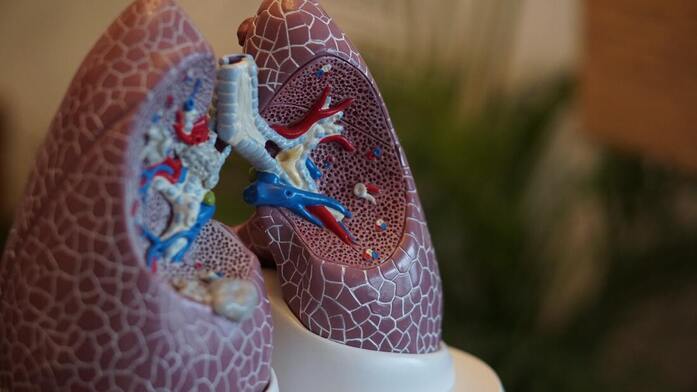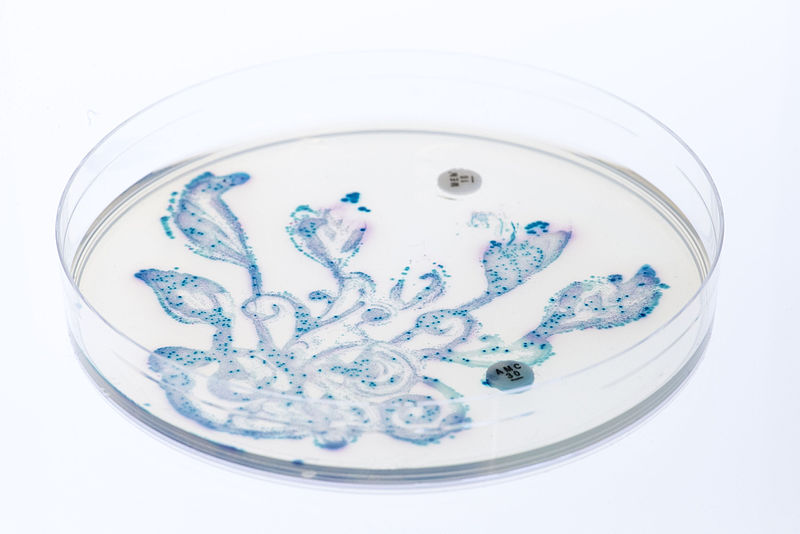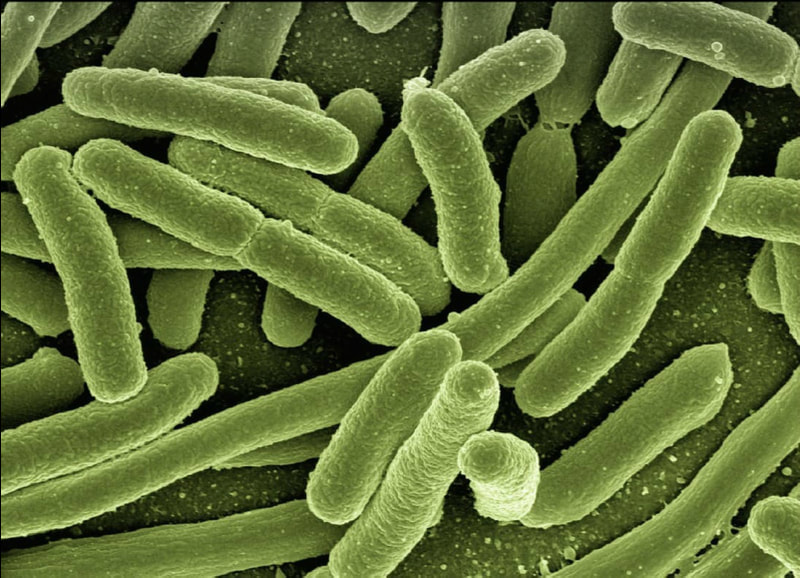Using Sweat Stickers to Diagnose Cystic Fibrosis in Newborns
Cystic fibrosis (CF) is a recessive genetic disorder that affects nearly 30,000 individuals, most of whom are of European descent, in the United States. CF results in chronic health issues from birth and a life expectancy of only 46 years. The disease involves mutations in the Cystic Fibrosis Transmembrane Conductance Regulator (CFTR) gene, which acts as a channel for chloride ions to flow into or out of the cell. The mutated CFTR channel blocks chloride ions traveling from one side of the cell membrane to the other. Epithelial cells, which line the organs and skin, are reliant on CFTR to function. Thus, CFTR mutations pose a serious problem to bodily functions, especially in the skin and the lungs.
At the surface of the skin, sweat is produced in sweat glands as the body releases water along with sodium and chloride ions. Normally, the sodium and chloride ions reenter the cell through CFTR; however, a CFTR mutation prevents sodium and chloride ions from returning to the body, leading to increased sweating and dehydration. Other complications arise in the passages of the lungs. Mutated CFTR in lung epithelial cells increases the amount of sodium ions and water entering the cells, resulting in an abnormally thick mucus layer. As a result, the cells of the lung become unable to move particles, bacteria, and viruses out of the lungs, thereby provoking infections, inflammation, and respiratory failure. This thick buildup of mucus also occurs in the gastrointestinal tract, prompting malnutrition, liver disease, and pancreatitis. Treatment for CF is on a patient-to-patient basis depending on the severity of the disease, but treatment efficacy increases with early detection. Thus, it is important to be able to accurately and economically detect CF in newborns.
At the surface of the skin, sweat is produced in sweat glands as the body releases water along with sodium and chloride ions. Normally, the sodium and chloride ions reenter the cell through CFTR; however, a CFTR mutation prevents sodium and chloride ions from returning to the body, leading to increased sweating and dehydration. Other complications arise in the passages of the lungs. Mutated CFTR in lung epithelial cells increases the amount of sodium ions and water entering the cells, resulting in an abnormally thick mucus layer. As a result, the cells of the lung become unable to move particles, bacteria, and viruses out of the lungs, thereby provoking infections, inflammation, and respiratory failure. This thick buildup of mucus also occurs in the gastrointestinal tract, prompting malnutrition, liver disease, and pancreatitis. Treatment for CF is on a patient-to-patient basis depending on the severity of the disease, but treatment efficacy increases with early detection. Thus, it is important to be able to accurately and economically detect CF in newborns.
Image Source: Robina Weermeijer
The current standard for CF detection is through a strap-on device called the Macroduct Sweat Collection System (MSCS), which stimulates and collects sweat to be analyzed for chloride concentration. However, the MSCS has difficulty collecting the required volume of sweat, an issue termed “quantity not sufficient” (QNS). Consequently, a team of researchers from Northwestern University sought to create an all-in-one device for CF detection that would be a cheaper and more efficient alternative to the MSCS. They designed a flexible silicone sweat collection device that clings to the skin like a sticker. The device stimulates sweat production using pilocarpine, a compound that activates sweat glands, and collects sweat through built-in ducts. This design outperformed the MSCS in the volume of sweat collected, and, in clinical trials, reported a 0% QNS rate compared to the MSCS’s 5%. Chloride concentrations in the sweat collected from the new device were highly correlated with those from the MSCS. This means that the new device is as precise as MSCS, and the same conclusions can be made from the resulting data.
The researchers next developed a method to measure the chloride concentration directly from the sticker device. They used silver chloranilate, a chemical that reacts with chloride ions and changes color according to chloride concentration. With the help of a green film to minimize inconsistencies in color, a physician can measure the chloride concentration in the sweat by taking a picture of the device and analyzing the color. In an initial trial, the device was able to distinguish CF and non-CF participants accurately.
The researchers’ sticker-like device can efficiently collect sweat and measure chloride levels without the need for expensive lab work. Future clinical trials of the device must be conducted to increase the sample size and determine its effectiveness. However, preliminary results of the device show promise in detecting CF early and thereby improving treatment outcomes.
The researchers next developed a method to measure the chloride concentration directly from the sticker device. They used silver chloranilate, a chemical that reacts with chloride ions and changes color according to chloride concentration. With the help of a green film to minimize inconsistencies in color, a physician can measure the chloride concentration in the sweat by taking a picture of the device and analyzing the color. In an initial trial, the device was able to distinguish CF and non-CF participants accurately.
The researchers’ sticker-like device can efficiently collect sweat and measure chloride levels without the need for expensive lab work. Future clinical trials of the device must be conducted to increase the sample size and determine its effectiveness. However, preliminary results of the device show promise in detecting CF early and thereby improving treatment outcomes.
Featured Image Source: Mylene2401
RELATED ARTICLES
|
Vertical Divider
|
Vertical Divider
|
Vertical Divider
|






